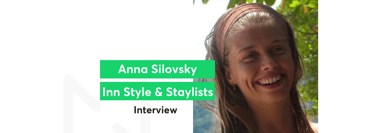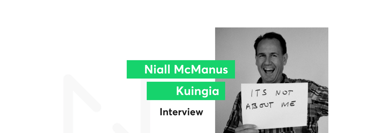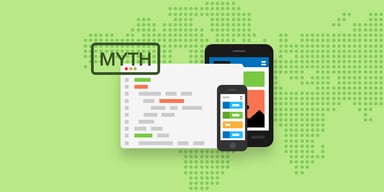A Comprehensive Guide to SaaS Development in 2023

Short Summary
-
Comprehensive guide to SaaS development in 2023, leveraging cloud technology and offering cost-effectiveness and flexibility.
-
Key components include selecting the right tech stack & scalability for a seamless user experience.
-
Overcome challenges with security, third-party integration & scalability by utilizing best practices & an experienced team.
Understanding SaaS Development
SaaS application development has revolutionized the way SaaS software is delivered and consumed. The SaaS market continues to grow, with businesses increasingly adopting cloud-based saas solutions, such as saas apps, to stay competitive and meet the ever-changing needs of their customers. At the core of SaaS app development is the ability to optimize resources for customers, host and sustain software on a SaaS platform, and offer valuable SaaS solutions tailored to customer requirements. With the rise of SaaS software development, companies can now leverage the power of cloud technology to create and maintain innovative solutions.
But how exactly do SaaS applications work, and what sets them apart from traditional software development?
The rise of SaaS applications
The rise of cloud computing has fueled the growth of SaaS applications, offering a myriad of benefits for both businesses and end-users. SaaS applications can be developed for various types of interactions, including:
-
B2C
-
B2B
-
P2P
-
G2P
-
Corporate Solutions
These applications cover a wide range of industries and use cases. As more companies embrace the advantages of SaaS, competition in this space is heating up. To stand out, SaaS developers must create innovative, user-centric applications that solve real-world problems and deliver exceptional value.
One of the main attractions of SaaS applications is their cost-effectiveness. With no need to invest in expensive hardware or software licenses, businesses can access cutting-edge tools and services at a fraction of the cost of traditional software. Furthermore, the flexibility of SaaS applications allows users to access services from any device with an internet connection, ensuring they always have the tools they need at their fingertips. In a world where agility and adaptability are crucial for success, the rise of SaaS applications is showing no signs of slowing down.
Key components of SaaS development
Building a successful SaaS application involves careful planning, design, development, and maintenance to ensure a seamless user experience. One of the most critical aspects of SaaS development is selecting the right technology stack, which encompasses:
-
Databases
-
Servers
Choosing the right technologies not only ensures the app performs optimally but also lays the foundation for future improvements and new feature integrations.
Another essential component of SaaS development is scalability. As businesses grow and customer demands evolve, SaaS applications must be able to expand both vertically and horizontally to accommodate these changes. A robust and scalable architecture allows SaaS applications to:
-
Adapt to increasing workloads
-
Ensure consistent performance and reliability for users
-
Make it easier to integrate with third-party services, further extending the functionality and value of the application
Benefits of SaaS Development
SaaS development offers a wealth of benefits for businesses, with its unique combination of cost-effectiveness, rapid deployment and updates, and scalability and flexibility making it an attractive option for organizations looking to leverage the power of cloud computing through cloud services.
But how do these advantages relate to real-world outcomes, and what can businesses expect when they choose to develop a SaaS application?
Cost-effectiveness
One of the most significant advantages of SaaS application development is its cost-effectiveness. By eliminating the need for costly hardware, software licenses, and ongoing maintenance, SaaS applications can significantly reduce upfront costs and provide a subscription-based revenue model that appeals to businesses of all sizes. This cost-effective approach allows companies to allocate more resources to other critical areas, such as product development and marketing, ultimately driving business growth.
The cost of developing a SaaS application can vary widely, depending on factors such as:
-
the complexity of the product
-
its features
-
the technologies selected
-
the location of the developers hired
By carefully planning and managing the development process, businesses can minimize costs while still delivering a high-quality product that meets their customers’ needs.
In addition, the subscription-based revenue model of SaaS applications provides a steady and predictable income stream, further contributing to the overall cost-effectiveness of this development approach.
Rapid deployment and updates
SaaS applications can be quickly deployed and updated, ensuring users always have access to the latest features and improvements. This rapid deployment and update process not only keeps the application fresh and engaging but also helps businesses stay competitive in today’s fast-paced digital landscape. With SaaS development, there’s no need for users to wait for lengthy installations or software updates; they can simply log in and start using the application immediately.
Another advantage of rapid deployment and updates is the ability to gather user feedback and iterate on the product more quickly. By continuously monitoring user behavior and feedback, developers can identify areas for improvement and quickly address any issues, ensuring the application remains relevant and valuable to its users. This agile approach to development allows SaaS applications to evolve and grow alongside their user base, adapting to changing needs and expectations over time.
Scalability and flexibility
SaaS applications offer unparalleled scalability and flexibility, allowing businesses to easily accommodate growing user bases and adapt to changing business needs. With the ability to scale both vertically and horizontally, SaaS applications can seamlessly handle increased workloads and support larger numbers of users without compromising performance. This scalability is particularly beneficial for businesses experiencing rapid growth or those with fluctuating demand, as it allows them to quickly and efficiently adapt their software to meet their evolving needs.
In addition to scalability, SaaS applications also offer flexibility in terms of features, integrations, and customization options. As businesses grow and their requirements change, SaaS applications can be easily updated and expanded to offer new functionality and integrations with other services, ensuring they remain relevant and valuable to users. By building a scalable and flexible SaaS application, businesses can future-proof their software investments and ensure long-term success in the ever-changing digital landscape.
SaaS Development Process
Developing a successful SaaS application is a complex process, requiring a combination of planning, design, development, and maintenance to ensure a seamless user experience.
In the following sections, we’ll take a closer look at the various stages involved in the SaaS development process and explore how each stage contributes to the overall success of the application.
Planning and research
Thorough market research and competitor analysis are crucial for identifying opportunities and defining the scope of a SaaS application. By gaining a deep understanding of the target market, customer needs, and industry trends, businesses can:
-
Create a roadmap that guides them through the development process
-
Uncover any potential challenges or barriers to entry
-
Devise strategies for overcoming these obstacles
-
Ensure the success of their SaaS application
During the planning and research phase, businesses should also work closely with their development team to establish clear goals, objectives, and milestones for the project. This collaboration helps to ensure that all stakeholders are aligned and working towards a common vision, while also providing the development team with the necessary context and information to effectively build the SaaS application.
By investing time and effort into the planning and research stage, businesses can significantly improve their chances of developing a successful SaaS application that meets the needs of their target audience.
Design and Architecture
Creating a user-friendly design and robust architecture is essential for a successful SaaS application. The design of the application should be intuitive and engaging, ensuring that users can easily navigate and interact with the various features and functionalities. In addition, the architecture of the SaaS application must be carefully crafted to support scalability, performance, and security, providing a solid foundation on which to build the rest of the application.
Choosing the right technologies not only ensures the app performs optimally but also lays the foundation for future improvements and new feature integrations.
By carefully planning and executing the design and architecture phase, businesses can significantly improve the user experience and overall performance of their SaaS application, setting the stage for long-term success.
Development and testing
The development phase of a SaaS application involves building the application, integrating third-party services, and conducting thorough testing to ensure optimal performance. During this stage, the development team will work closely with the business to ensure that the application meets the needs of the target audience and aligns with the overall vision for the product. As the application is built, developers will also need to be mindful of performance, security, and scalability considerations, ensuring that the application is capable of handling the demands of its users.
Testing is a critical component of the SaaS development process, as it helps validate the functionality and performance of the application before it is released to users. This includes both manual and automated testing approaches, which should be conducted throughout the development process to ensure that any issues are identified and addressed as early as possible. By rigorously testing the application during development, businesses can ensure that the final product meets the highest standards of quality and performance, resulting in a more successful SaaS application overall.
Deployment and maintenance
Launching the SaaS application and providing ongoing maintenance and updates are critical for long-term success. Once the application has been thoroughly tested and refined, it is ready for deployment, which involves:
-
Making it available to users through a cloud provider or other hosting solution.
-
Carefully managing the process to ensure a smooth transition for users.
-
Minimizing any potential disruption or downtime.
Ongoing maintenance and updates are essential for keeping the SaaS application fresh and relevant, as well as addressing any issues that may arise over time. This includes monitoring the performance of the application, gathering user feedback, and implementing updates and improvements as necessary. By providing continuous support and maintenance for the SaaS application, businesses can ensure that their users always have access to the latest features and improvements, resulting in a more engaging and valuable experience overall.
Choosing the Right SaaS Development Team
Building a skilled and experienced development team is crucial for creating a successful SaaS application, whether through in-house resources or outsourcing. The right team can make all the difference in the quality and success of the final product, so it’s essential to carefully consider the various options available when selecting a development team for your SaaS project.
It is important to consider the size of the team, the skills, and experience of the team.
In-house vs. outsourcing
Choosing between in-house development and outsourcing can be a difficult decision for many businesses, as each option has its own unique set of advantages and challenges. In-house development allows businesses to have complete control over the development process and provides opportunities for regular meetings and collaboration. However, building an in-house team can also be time-consuming and expensive, especially if specialized skills or expertise are required.
On the other hand, outsourcing the development of a SaaS application can offer businesses access to a wider pool of talent and expertise, often at a more competitive price point. However, outsourcing can also present challenges in terms of communication and collaboration, as well as potential issues related to intellectual property and data security.
Ultimately, the choice between in-house and outsourcing will depend on the specific needs and resources of the business, as well as the complexity and scope of the SaaS application being developed.
Essential roles and skills
A successful SaaS development team should include a variety of roles, such as:
-
Developers: responsible for coding and developing the software
-
Designers: focus on creating a user-friendly interface and user experience
-
Project managers: oversee the project and ensure that it is completed on schedule and within budget.
In addition to these core roles, a SaaS development team may also require the expertise of other specialists, such as technical writers, marketing specialists, and product managers. These professionals can help ensure that the SaaS application is not only technically sound but also effectively marketed and positioned within the marketplace. By assembling a diverse and skilled development team, businesses can greatly improve their chances of success in the competitive world of SaaS development.
Overcoming Common SaaS Development Challenges
SaaS development is not without its challenges, but with the right approach and a skilled development team, these obstacles can be overcome and even turned into opportunities for growth and innovation.
In this section, we’ll explore some of the most common challenges faced during SaaS development and offer solutions for overcoming them.
Security and data protection
Ensuring the security of user data and complying with data protection regulations is a top priority for SaaS applications. With sensitive information often stored and transmitted through these applications, it’s essential that developers take the necessary steps to protect user data and maintain compliance with relevant industry standards and regulations, such as the Payment Card Industry Data Security Standard (PCI-DSS) and the General Data Protection Regulation (GDPR).
To achieve robust security and data protection in a SaaS application, developers should implement a range of best practices and security measures, such as data encryption, secure authentication, and regular security audits. Additionally, partnering with a reputable cloud provider that prioritizes security and compliance can provide an added layer of protection for user data.
By taking a proactive approach to security and data protection, businesses can minimize the risk of data breaches and ensure the trust of their users.
Integration with third-party services
Integrating with external services can enhance the functionality of a SaaS application, but it requires careful planning and execution to ensure that these integrations are seamless and secure.
Integrating with third-party services can provide users with additional features and capabilities, such as:
-
Payment processing
-
Email marketing
-
Customer relationship management (CRM)
-
Analytics and Reporting
However, it is important to consider potential risks and challenges related to data security and performance. It is crucial to thoroughly vet and select reliable and trustworthy third-party services, and to implement proper security measures to protect user data. Regular monitoring and testing should also be conducted to ensure that the integrations are functioning properly and meeting the needs of the users.
To successfully integrate with third-party services, developers should carefully evaluate the security and reliability of these services before incorporating them into the SaaS application. Additionally, thorough testing and monitoring should be conducted throughout the integration process to identify and address any issues or performance bottlenecks.
By carefully selecting and integrating with trusted third-party services, businesses can extend the value and functionality of their SaaS applications while maintaining security and optimal performance.
Achieving scalability and performance
Building a scalable and high-performing SaaS application requires a combination of robust architecture, efficient development practices, and ongoing monitoring and optimization. Scalability is particularly important in SaaS development, as it ensures that the application can support a growing user base and adapt to changing business needs without compromising performance or functionality.
To achieve scalability and performance in a SaaS application, developers should focus on:
-
Creating a robust architecture that supports both vertical and horizontal scaling
-
Implementing best practices for efficient and maintainable code
-
Regular monitoring and performance optimization to identify potential bottlenecks or issues before they become critical
By following these steps, you can ensure that your application delivers a seamless and enjoyable user experience.
By investing in scalability and performance from the outset, businesses can future-proof their SaaS applications and ensure long-term success in the competitive SaaS market.
Summary
SaaS development continues to grow in popularity and importance, offering businesses a cost-effective, scalable, and flexible solution for delivering software to their customers. By understanding the key components of SaaS development, building a skilled and experienced development team, and addressing the common challenges faced during the development process, businesses can create successful SaaS applications that meet the needs of their users and drive long-term success. With the right approach and a proactive mindset, SaaS development can unlock new opportunities for innovation, growth, and competitive advantage in today’s fast-paced digital landscape.
Frequently Asked Questions
What is SaaS development?
SaaS development is the process of creating subscription-based software applications that are hosted on the cloud and accessible to end users via an internet connection. Unlike traditional software, SaaS apps are maintained by the provider and there is no need to install or buy the software for local use.
What is an example of SaaS?
Popular examples of SaaS products include Gmail, Slack, Microsoft Office 365, CRMs, and customer service solutions.
SaaS uses the Internet to provide subscription-based software services managed by third-party vendors, such as Dropbox, Google Workspace, and Salesforce.
What are the requirements for SaaS development?
For successful SaaS development, key requirements include scalability, flexibility, and robust security protocols to protect users’ data. Additionally, a professional tone must be used when writing the code. User interface must be intuitive to ensure user adoption.
Is software development the same as SaaS?
No, software development is not the same as SaaS. SaaS is a result of traditional software development evolution, which includes buying software on CDs or floppy discs.
What is the main difference between SaaS development and traditional software development?
The main difference between SaaS development and traditional software development is that SaaS uses cloud-based solutions and a subscription-based revenue model, while traditional software development involves upfront costs and software licenses.
Upfront costs for traditional software development can be expensive, and software licenses can be restrictive. With SaaS, customers pay a subscription fee for access to the software, and the software is hosted on the cloud, making it more accessible and cost-effective. Additionally, SaaS solutions are available.












